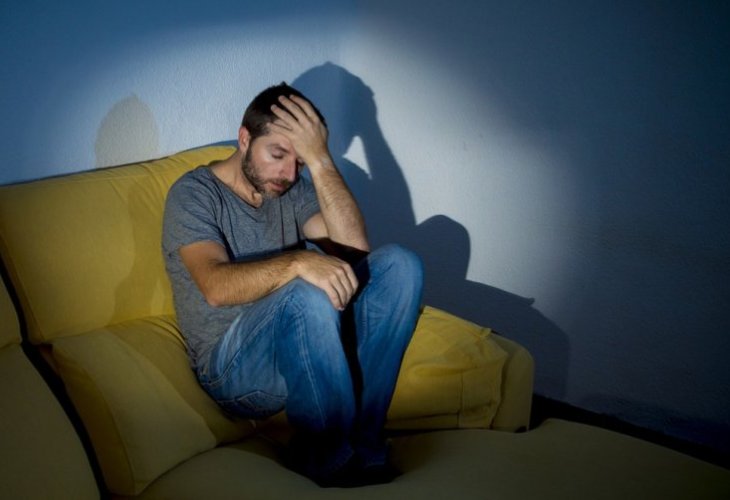Depression and Anxiety
Depression and Anxiety: Symptoms, Differences, and How to Treat Both Effectively
Understand the Overlap Between Depression and Anxiety, Learn About Dual Diagnosis, and Discover Proven CBT and Medication Strategies for Lasting Relief
 (Photo: Shutterstock)
(Photo: Shutterstock)
Is it possible to feel disgusted by life and wish to die, while at the same time being anxious about your health? If you're suffering from both depression and anxiety, the answer is yes. The common distinction between these two conditions lies in the time orientation: anxiety involves fear of something terrible that might happen in the future, while depression stems from the belief that the future will definitely be bad, based on past experiences.
While people with anxiety are often preoccupied with potential future disasters- making contingency plans and bracing for the worst-case scenarios- they are still engaging in preventive actions. Research from the Gulf War, for example, showed that anxious individuals were actually calmer during the war than non-anxious individuals because they were already accustomed to being on high alert.
Take a walk through nursing homes or even regular health clinics, and you’ll find many people- especially elderly individuals- who lament their lives and feel their existence is meaningless, expressing suicidal thoughts (typical of depression). At the same time, they might also be among the most frequent visitors to the doctor, deeply worried about every minor symptom. If formally diagnosed, many of them would be found to suffer from both depression and anxiety- a dual diagnosis that reflects a deeper, more complex emotional struggle.
What’s the Difference Between Sadness and Clinical Depression?
While everyone experiences low moods occasionally, the DSM-5 defines major depressive disorder as a condition lasting at least two weeks with at least five of the following symptoms:
Persistent low mood
Loss of interest or pleasure in activities
Changes in appetite or weight
Insomnia or oversleeping
Psychomotor agitation or retardation
Fatigue or loss of energy
Feelings of worthlessness or excessive guilt
Difficulty concentrating or making decisions
Suicidal thoughts or behavior
Types of Depression
Depression can take several forms:
Major Depression (as described above)
Dysthymia (a chronic, milder form)
Double Depression (dysthymia with occasional major episodes)
Postpartum Depression
Seasonal Affective Disorder (SAD)
Post-psychotic Depression
Depressive episodes within Bipolar Disorder
Prevalence
In Western countries, 15–20% of people will experience depression, with higher rates among those lacking social support, those with chronic physical illnesses, and university students- where the rate may reach 30%.
What’s the Difference Between Anxiety and an Anxiety Disorder?
Fear, worry, and anxiety are part of life. Some anxiety can even be helpful, such as exam nerves. In anxiety disorders however, the fear becomes persistent, overwhelming, and disrupts daily functioning. Panic attacks may cause symptoms like a racing heart, leading a person to mistakenly believe they’re having a heart attack. Other forms include:
Social Anxiety (fear of social situations)
Specific Phobias (e.g., flying, animals, enclosed spaces)
Generalized Anxiety Disorder (constant worry about multiple areas of life)
OCD (unwanted thoughts paired with compulsive behaviors)
The combined prevalence of anxiety disorders is estimated at 20–30% of the population.
What Is Comorbidity (Co-Occurring Disorders)?
“Comorbidity” refers to the presence of more than one disorder in the same person. Anxiety and depression often co-occur. The anxious person is uncertain if things will go badly, while the depressed person believes with certainty that they will. Those with both conditions typically experience greater impairment in daily life and are more difficult to treat.
Avoidance: The Shared Mechanism Behind Anxiety and Depression
Both anxiety and depression are strongly tied to avoidance. In anxiety, avoiding the feared situation (e.g., avoiding flying) reinforces the fear. In depression, avoidance stems from passivity and feelings of helplessness. The person doesn’t act because nothing feels worthwhile.
The DSM-5 outlines five key features of the mixed anxiety-depression condition:
Tension
Restlessness
Concentration difficulties due to worry
Fear that something terrible will happen
Fear of losing control
Treatment
Because avoidance is the common thread, the solution is exposure- facing the feared situation, which usually requires professional guidance. Following are the two main treatment approaches:
1. Cognitive-Behavioral Therapy (CBT)
Even if psychodynamic therapy is eventually beneficial, acute symptoms of anxiety or depression are best treated first with CBT. Cognitive work includes identifying and challenging distorted thought patterns. Psychiatrist Aaron Beck, the father of CBT, proposed the "cognitive triad" of depression: negative beliefs about the self, the world, and the future.
Common cognitive distortions include:
Overgeneralization: Drawing sweeping conclusions from a single event.
Selective Abstraction: Focusing only on the negatives.
All-or-Nothing Thinking: Perfectionism that leads to avoidance or procrastination.
Fortune Telling: In anxiety, trying to predict and control uncertainty; in depression, assuming a bleak future as certain.
Labeling: Stereotyping oneself or others (e.g., "I’m a loser," "People are evil").
Behavioral interventions target avoidance through gradual or immediate exposure, often paired with relaxation techniques.
2. Medication
Many antidepressants (especially SSRIs) are also effective for anxiety. If one medication isn’t effective or causes side effects, psychiatrists may try another SSRI or an SNRI. In many cases, medication is crucial to enabling the success of CBT.

